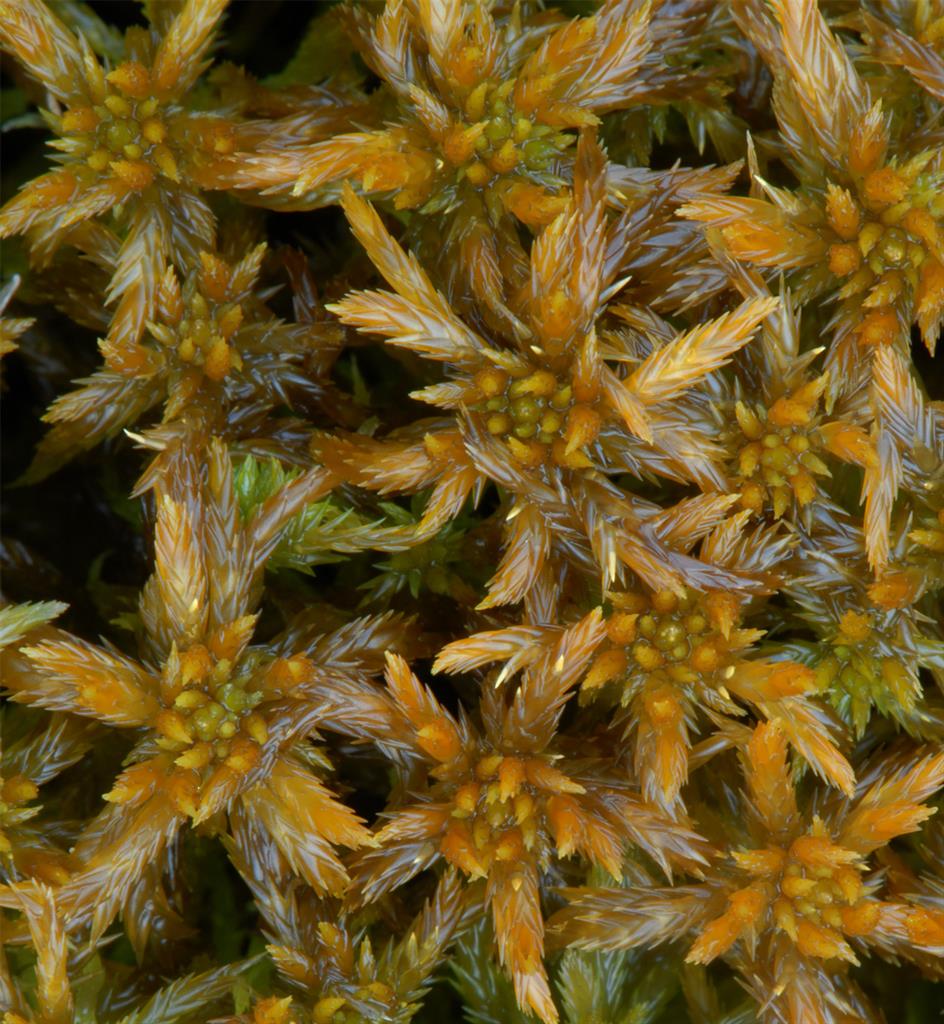Sphagnum
(Sphagnum annulatum)

Description
Plants moderate-sized and weak-stemmed; in lawns and floating mats; brownish green, brown, reddish brown to chestnut-brown, often with bluish tint when dry, capitulum 5-radiate and flat-topped. Stems pale green to brown; cortex poorly differentiated to undifferentiated. Stem leaves lingulate-triangular to triangular-lingulate, equal to or less than 1.2 mm, more or less spreading; apex obtuse; hyaline cells mostly fibrillose and nonseptate. Branches straight to distinctly curved, leaves becoming substantially longer at distal end of the branch. Branch fascicles with 2 spreading and 1-2 pendent branches. Branch stems green, with cortex enlarged with conspicuous retort cells. Branch leaves ovate-lanceolate, 1.5-2 mm, straight to slightly subsecund, only slightly undulate and recurved if at all; margin entire; hyaline cells on convex surface with numerous small free pores, on concave surface with numerous round free pores, cells relatively short in basal region (similar to mid region); chlorophyllous cells - triangular in transverse section, just reaching concave surface or slightly enclosed. Sexual condition dioicous. Spores 25-32 -m, finely papillose on both surfaces.Wet carpets, lawns, and mud bottoms in poor to medium fens, in mire-wide and mire-edge habitats; low to high elevations; Alta., B.C., Man., Nfld. and Labr. (Nfld.), N.W.T., Ont., Que., Yukon; Alaska, Idaho, Mich., Minn., Mont., N.Y., Wash., Wyo.; Eurasia.
Taxonomic tree:







